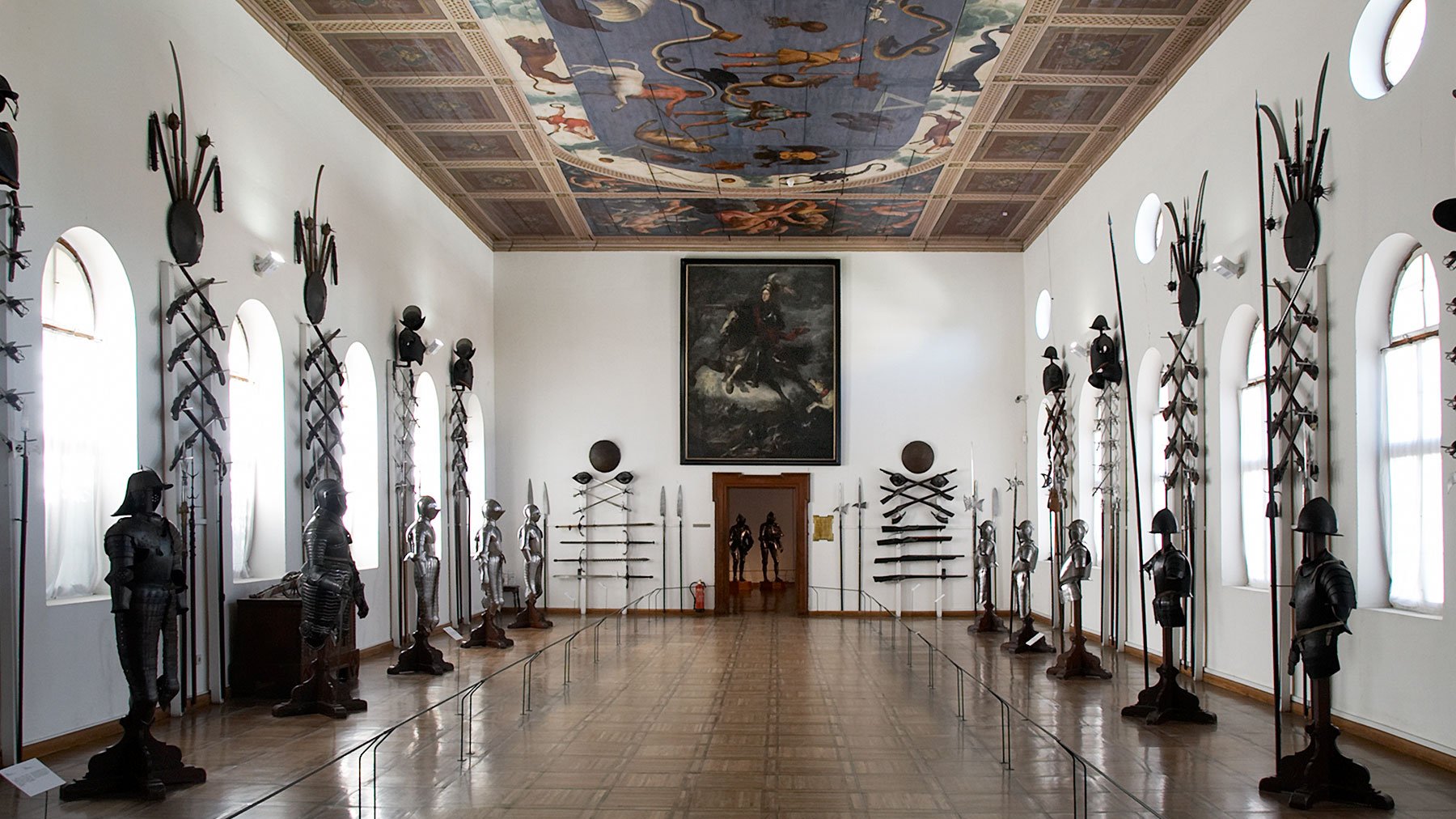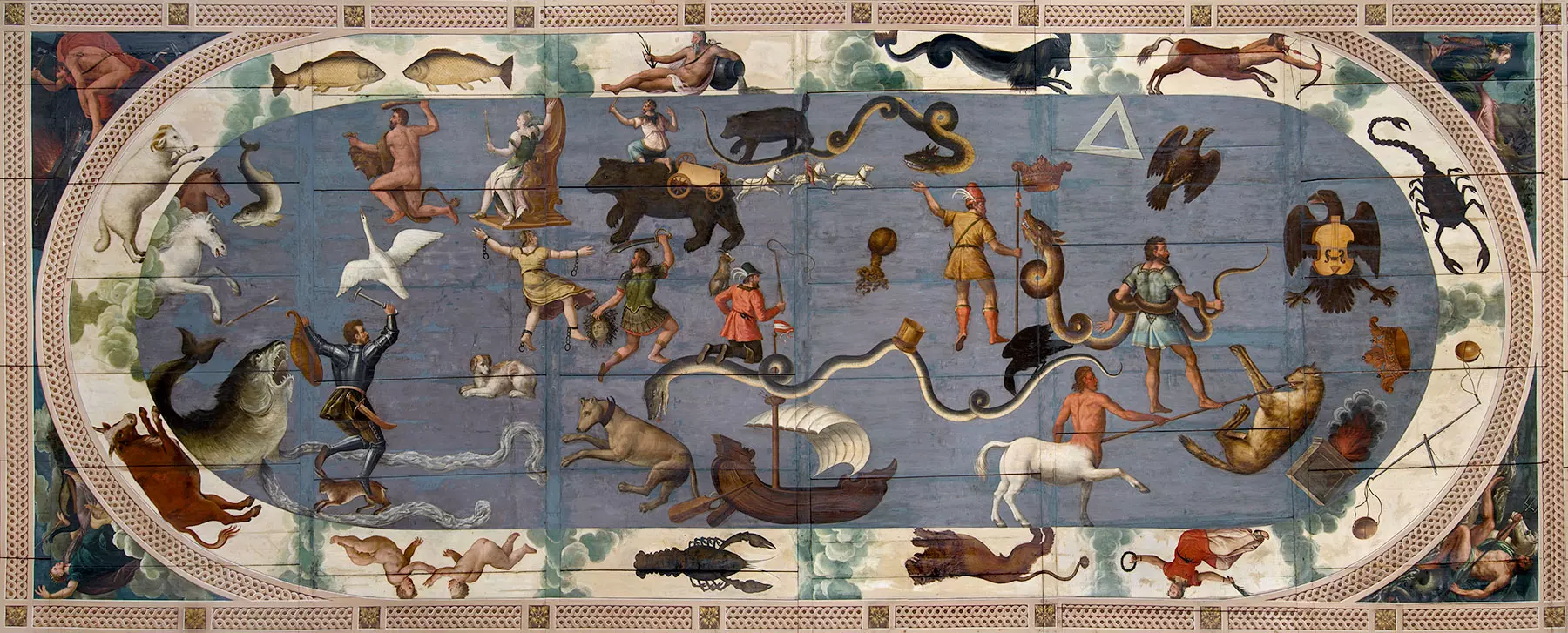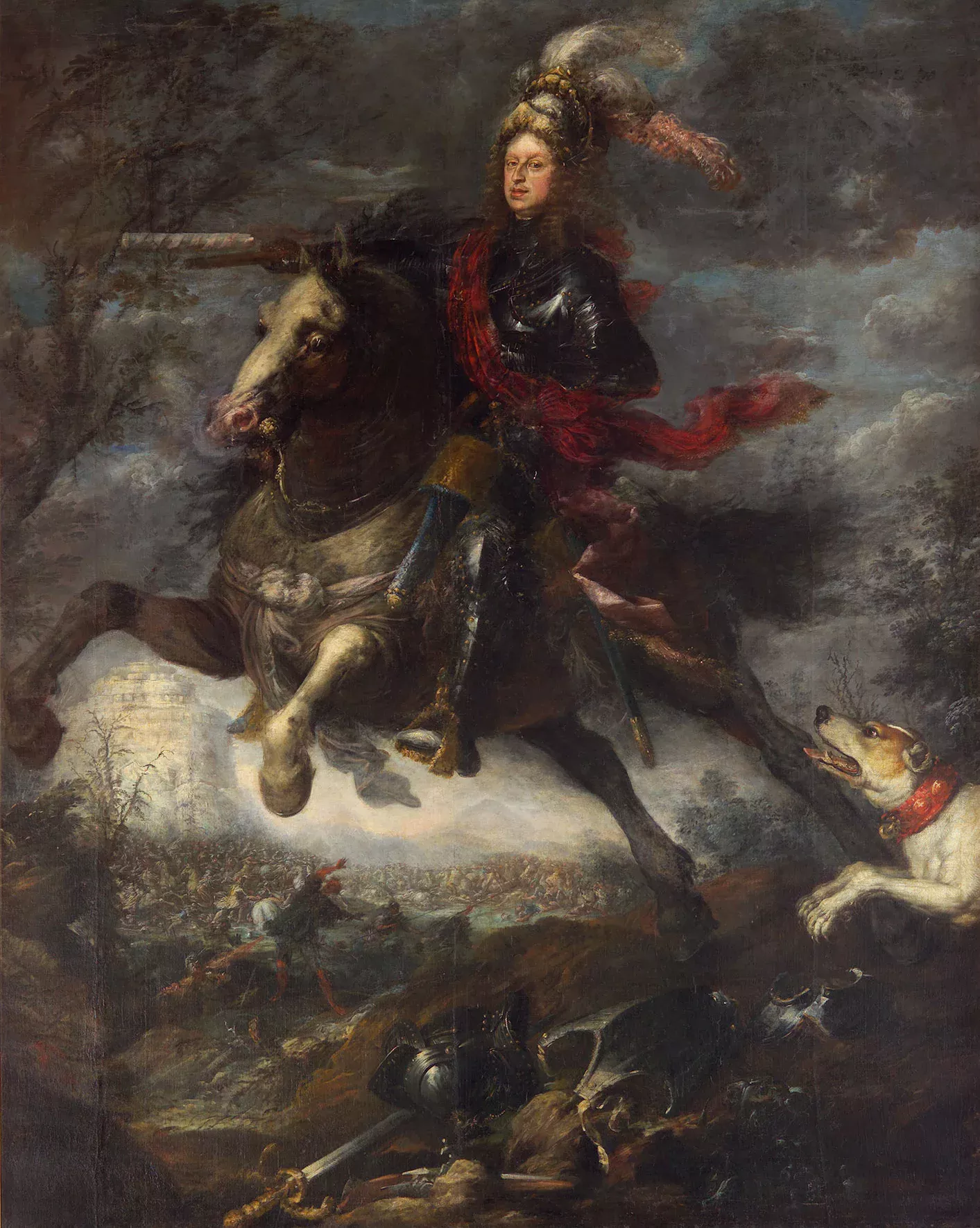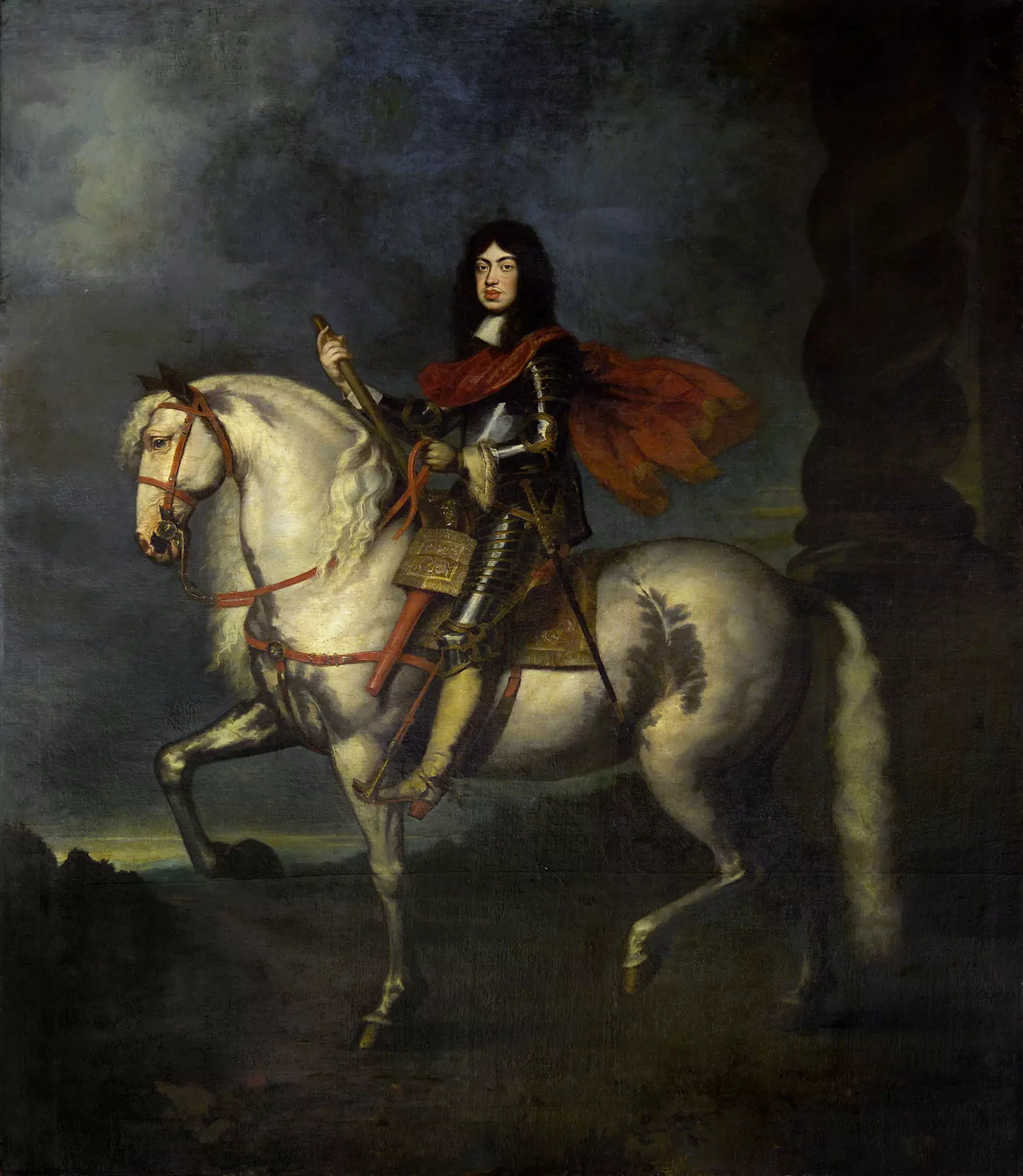Armour and weapons from the Thirty Years’ War (1618–1648)
They originate mainly from the inventory of the former Viennese armoury, and make clear the difference between splendid, unique pieces of the Renaissance and mass-produced weapons of the Baroque period. At the same time, they show plainly the appearance of a Baroque Armoury establishment.
The richly decorated suit of armour dates to the early seventeenth century; it was probably worn, for example, by the Nuremberg castle guard.
The lack of iron arm pieces and gloves is explained by the employment of firearms, which otherwise would have been unwieldy and inefficient. The helmet was also worn without a visor, in order to facilitate the aiming of the weapon. The outer surface of the armour is etched with strips of flowers and vines.
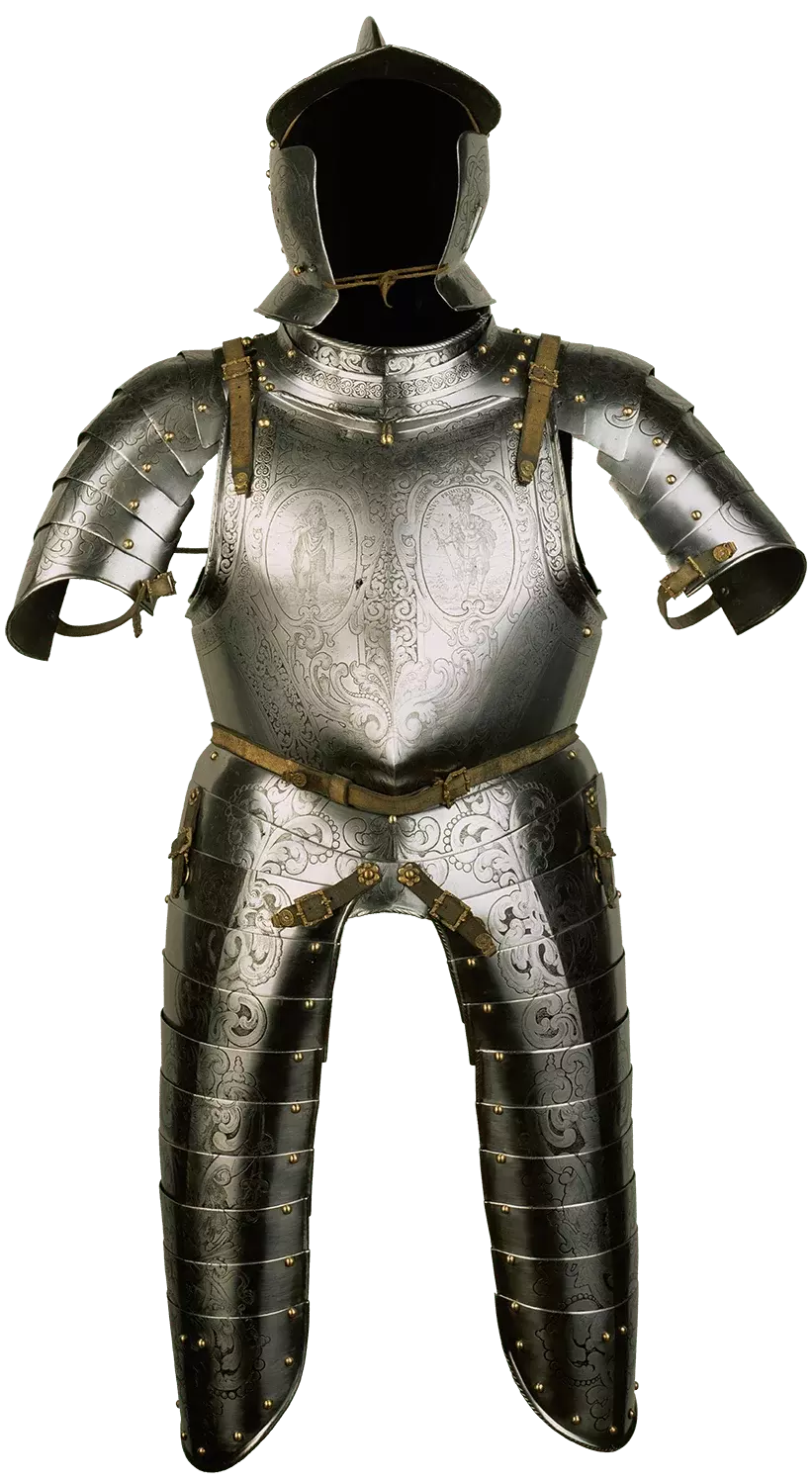
Johann Hauer (armourer), dated 1612
